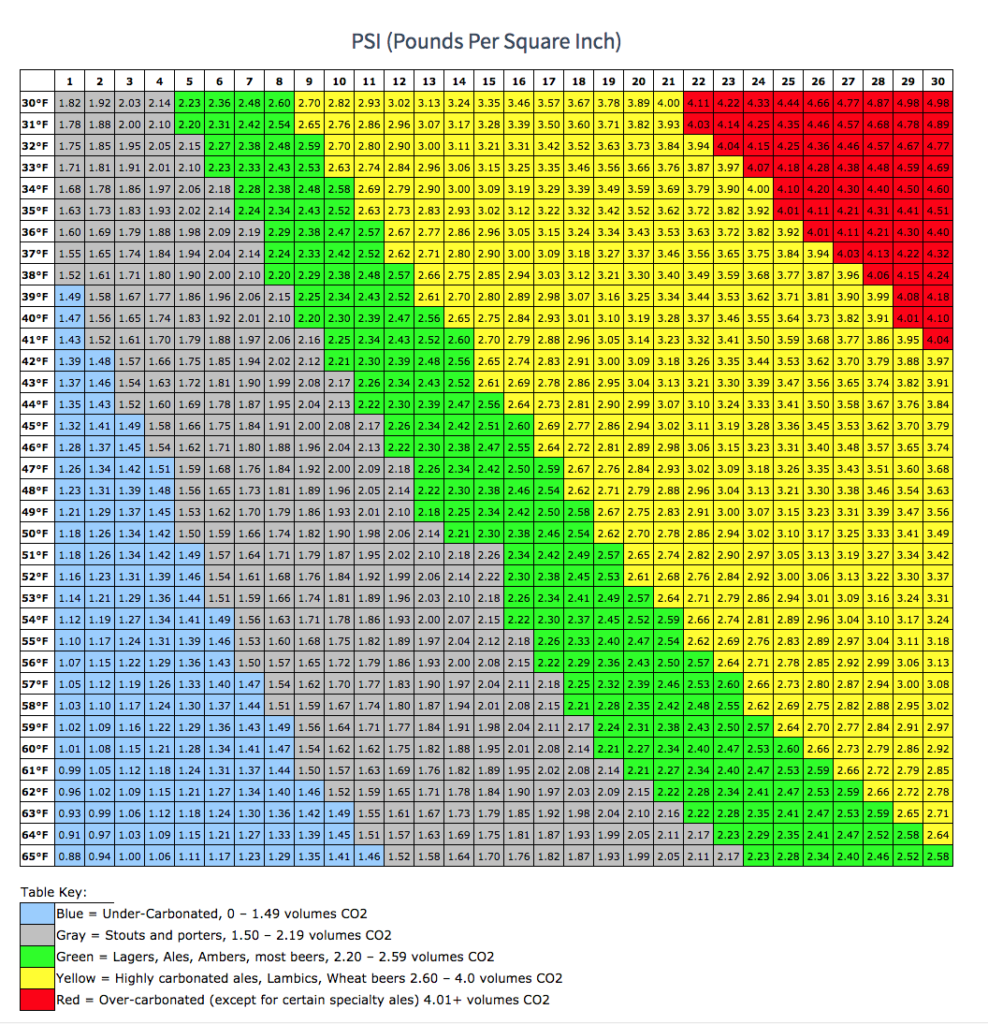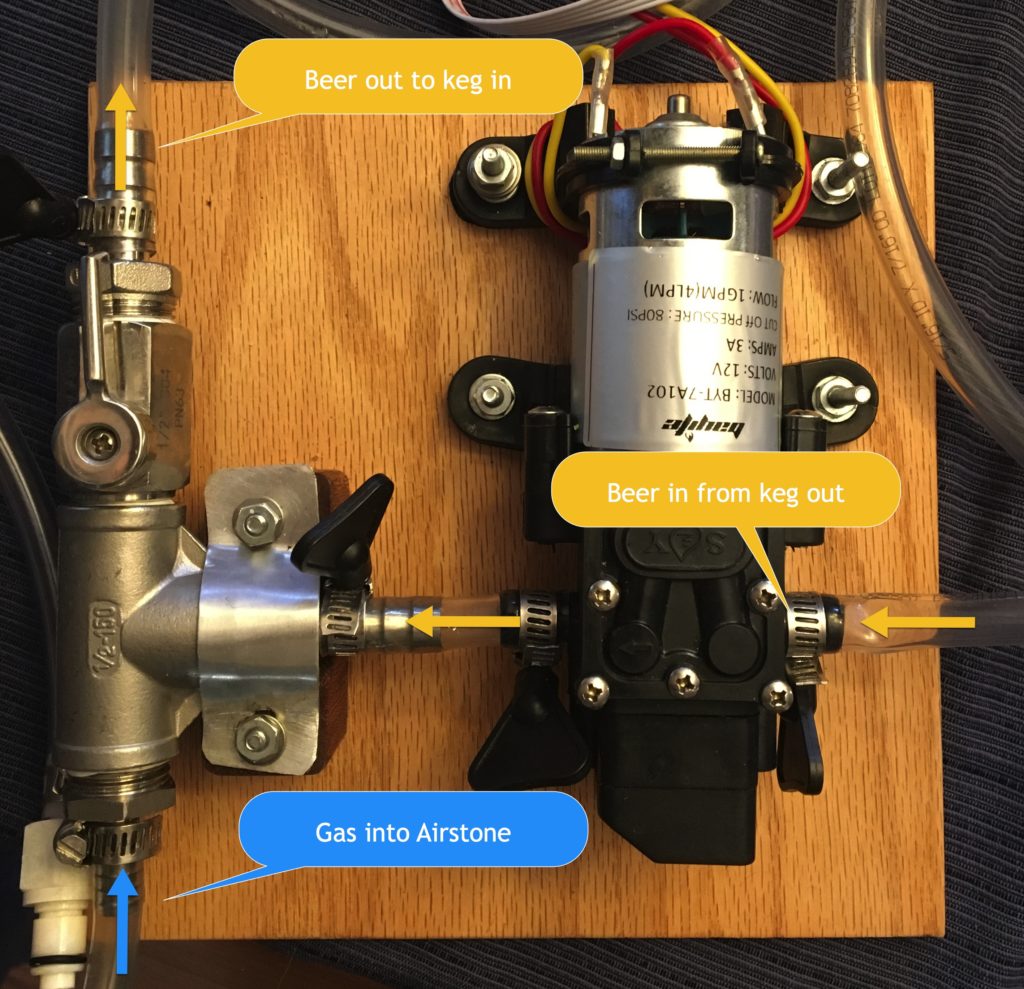Parts List
- 2X 1/4″ Swivel Flare Nut x 3/8″ Barb
- 2X 304 Stainless Stell 3/8″ Barb Hose to 1/2″ NPT
- Stainless Steel Tee 1/2″ NPT Female
- Optional: 1/2″ Stainless Steel Mini Ball Valve NPT FxM
- 2 micron Inline Stainless Steel Aeration stone 1/2 NPT with 1/4″ Barb
- 12 V Self Priming Water Pump
- 12V 5A DC Power Supply – 60W Max
- 2X Micro Size 4 band clamps (8 Clamps in total)
- Ball Lock MFL Disconnect Set
- Beer Line Cleaner
- Teflon Tape
- Hoses for gas and soda/beer recirculation
Parts cost me about $110. Blichman’s QuickCarb runs about $180. Mines mounted on a piece of oak plywood and Blichman’s Is mounted on a nice piece of stainless steel. I actually spent about $40 less because I already had some of the parts on hand like swivel flare nuts and and the disconnects and beer line cleaner on-hand The ball valve, optional, is used during the sanitization process. One can simply kink the hose instead.
Sanitizing it
Before and after use it’s recommended to sanitize the unit fully. Fill a suitably large vessel with about half a gallon of water and mix in the appropriate amount of beer line cleaner (BLC). Remove the swivel nuts from the disconnects and the gas line and submerge all thee ends in the BLC. Power the pump and circulate for several minutes.
After several minutes have elapsed kink the out line or close the ball valve so it forces BLC through the stone. Run the pump for several more minutes. Unkink the line or open the valve and remove the gas line from the BLC. The pump should draw the BLC from the gas line.
Remove the in line from the BLC and allow the pump to push the remaining BLC out of the line. Drain any remaining water from the hoses and allow to air dry. When dry re-attach the swivel nuts the their appropriate fittings.
Using It
Hook up the keg outlet fitting (the one connected to the dip-tube) to the pump inlet. Hook the gas inlet to the output of the carbonator. Hook up the CO2 gas to the air-stone inlet. Set the pressure based on the beer temperature and volumes of CO2 desired. I like my beer/soda in the 2.2-2.5 range. Beer/Soda is more receptive to carbonation when it’s cold and requires less pressure – I usually keg and chill then run through the carbonator. So long as you wind up with the correct pressure and temperature you should settle out at the desired carbonation level fairly quickly.
Once it’s all hooked up and the gas is on (you should hear an initial hiss as the pressure equalizes in the keg) you can turn on the pump power and the beer will recirculate past the airstone. When the bubbles stop persisting on the line after the tee fitting you beer/soda has been carbonated to the desired level. I tend to tweak the pressure slightly higher towards the end sine the liquids tend to warm slightly throughout the process. Once it’s done turn off the pump and let it rest for a couple minutes then kick on the pump again and make sure the bubbles aren’t forming (i.e. there isn’t new gas getting added to the mix).

After carbonation is completed. Turn off the gas and remove the fittings from the keg and then the swivel nuts and repeat the sanitation process above again. Hook up your keg (and if you started cold) pour yourself a cold one.
